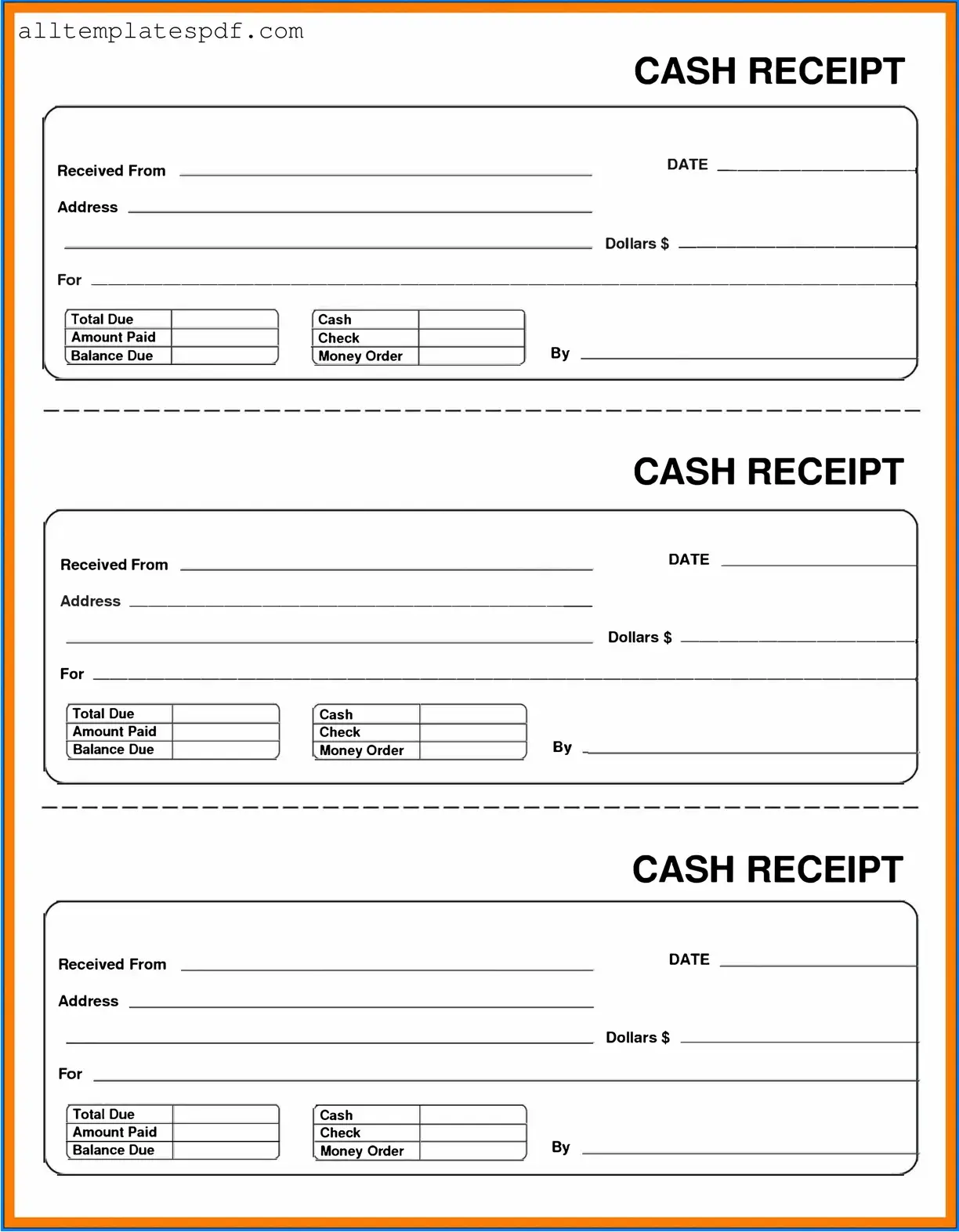Filling out a Cash Receipt form might seem straightforward, but many people stumble over common mistakes that can lead to confusion or even financial discrepancies. One frequent error is not providing a clear date. Without a specific date, it can be challenging to track when the transaction occurred, which can complicate record-keeping and audits down the line. Always ensure that the date is accurately filled in to avoid future headaches.
Another common mistake is neglecting to include complete payment details. This includes not just the amount received, but also the method of payment, whether it’s cash, check, or credit card. Omitting these details can create ambiguity and make it difficult to reconcile accounts later. Make sure every payment detail is accounted for to maintain clarity.
People often forget to include the payer's information, which can be crucial for record-keeping and follow-ups. Failing to note who made the payment can lead to confusion, especially if there are multiple transactions from different individuals. Always take a moment to double-check that the payer's name and contact information are included.
Inaccurate calculations are another pitfall. It’s easy to miscalculate the total amount received, especially if there are multiple items or services involved. A simple math error can throw off your entire financial record. Take your time to verify all calculations and consider using a calculator to ensure accuracy.
Additionally, many individuals overlook the importance of signatures. A missing signature can render the Cash Receipt invalid. This can lead to disputes over whether a payment was actually made. Be sure to sign the form and, if applicable, have the payer sign as well to confirm the transaction.
Lastly, not keeping a copy of the Cash Receipt form can be a significant oversight. Without a record of the transaction, it’s easy to lose track of payments, which can cause issues later on. Always make a copy for your records, so you have a reference point if questions arise in the future.
